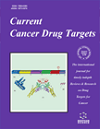
Full text loading...
We use cookies to track usage and preferences.I Understand
Non-small cell lung cancer (NSCLC) patients often benefit from EGFR inhibitors like gefitinib. However, drug resistance remains a significant challenge in treatment. The unique properties of 1,2,3-triazole, a nitrogen-based compound, hold promise as potential solutions due to its versatile structural attributes and diverse biological effects, including anticancer properties.
Our synthesis process involved the huisgen cycloaddition chemical method, which generated diverse icotinib derivatives. We evaluated the anticancer capabilities of these derivatives against various cancer cell lines, with a specific focus on NSCLC cells that exhibit drug resistance. Additionally, we investigated the binding affinity of selected compounds, including 3l, towards wild-type EGFR using surface plasmon resonance (SPR) experiments.
Notably, icotinib derivatives such as derivative 3l demonstrated significant efficacy against different cancer cell lines, including those resistant to conventional therapies. Compound 3l exhibited potent activity with IC50 values below 10 μM against drug-resistant cells. SPR experiments revealed that 3l exhibited enhanced affinity towards wild-type EGFR compared to icotinib. Our research findings suggest that 3l acts as a compelling antagonist for the protein tyrosine kinase of EGFR (EGFR-PTK).
Icotinib derivative 3l, featuring a 1,2,3-triazole ring, demonstrates potent anticancer effects against drug-resistant NSCLC cells. Its enhanced binding affinity to EGFR and modulation of the EGFR-RAS-RAF-MAPK pathway position 3l as a promising candidate for the future development of anticancer drugs.

Article metrics loading...

Full text loading...
References


Data & Media loading...
Supplements

